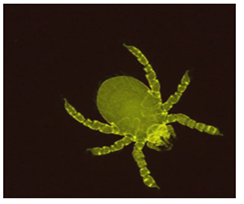How Much Challenging Scrub Typhus Could Be – A Case Report
Abstract
Scrub typhus, often known as bush typhus, is a condition brought on by “Orientia-tsutsugamushi” bacteria. Trombiculid mites transmit the rickettsial zoonotic disease known as scrub typhus to people region covered. Scrub typhus has been treated with a number of antibiotics, including rifampicin, macrolides, quinolones, tetracycline, and chloramphenicol. Since 1996, the reality of doxycycline resistance has been questioned, but resistance to tetracycline has been hypothesised to be the cause of delayed clinical improvement. In this zoonotic disease, humans serve as unintentional hosts. Although the Asia-Pacific region is the only place where scrub typhus can be found geographically, a billion people are at risk and there are around a million cases recorded annually. In conclusion, scrub typhus can be present in a variety of clinical ways. However, native patients from hilly areas, such as West Bengal, Himachal Pradesh, or Uttarakhand, frequently experience a milder course of illness without a rash or eschar. It is important to investigate whether this is a result of prior exposure to the organism, a different strain type, or other elements. Considerable edema on the face, the feet, and the upper eyelids are additional indicators of scrub typhus. Scrub typhus is a significant contributor to acute febrile illnesses that involve a variety of organ systems and are frequently vague.
